First Steps
Rocket stoves and wood gasification stoves are nothing new, but the combination of the two is not commonly seen. Why not add the after burning efficiencies of a wood gasification stove with the ability of continually feeding a rocket stove? That is what we set out to do over a year ago. It started with a cereal box cut, folded and presented. Drawings for the parts were created and an old half of a 55 gallon drum was cut into the pieces and welded together as per the drawings. The stove was a little rough, but it had embodied the concept, a folding triangular stove, ten inches tall with two draft tubes passively feeding air under the diffusion plate that mixes the flame and smoke from the rocket stove with fresh air, creating a second, cleaner flame.
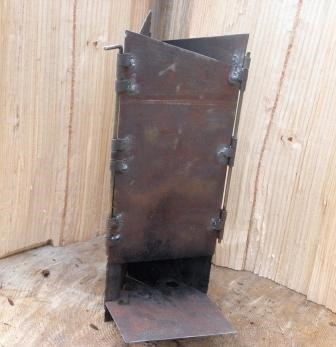
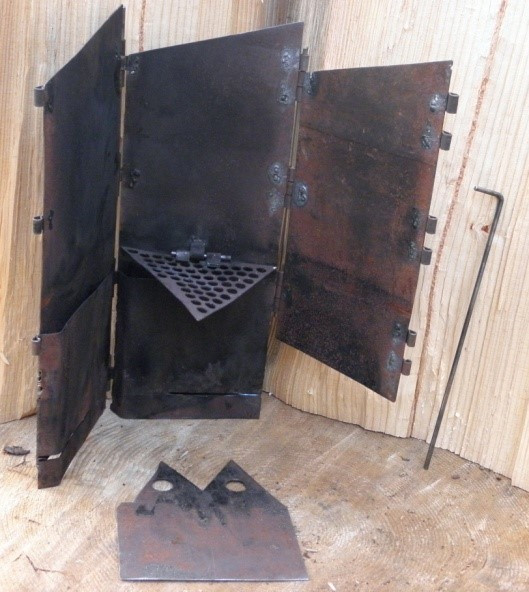
Sticks were gathered and a fire started. One thing became clear very quickly, there is a reason most rocket stoves are round or square. The triangle was forcing the sticks together which choked out the flame. The stove worked and occasionally everything would come together and a purple flame would shoot out the top, but not reliably. A small back was added, which allowed more room for sticks. It worked much better, but was this the best shape? We decided to find out.
Two more stoves were made, this time without drawings and without welding. Templates were cut and folded, to reduce time wasted on ideas that would be set aside. All three stoves were tested side by side. The first to boil a cup of water would win.

The trapezoid and the pyramid were neck and neck, the straight sided square could not keep up. The frontrunners were evaluated for manufacturability, and the pyramid was chosen.
Once the body of the stove was chosen we moved on to testing different styles of diffusion plates. The first plate that we tested was just a large number of evenly spaced holes and it seemed to allow the air and flame to pass through without sufficiently mixing. So the center was left solid to force the flame toward the draft tubes. The difference was noticeable. The new diffusion plate boiled the water faster.
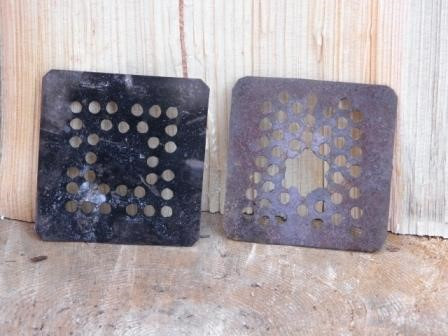
Watching the flame it was clear that the mixing of the air and combustibles was not always even, sometimes the flame would be purple, sometimes orange. After brain storming, a cyclone diffusion plate was made and it mixed well. Much better than the plate that had lines of holes that were formed into cheese grater style louvers.
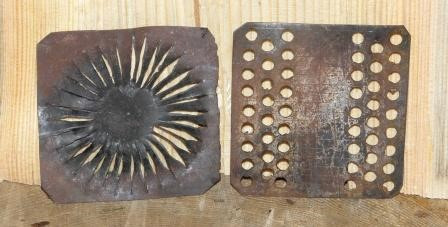
But the cyclone had a downfall, it shot the flame out to the sides of the stove, wasting a lot of heat through the walls. Other louver designs were tested, and boil times continued to drop as the mixed flame was focused at the center of the pot.
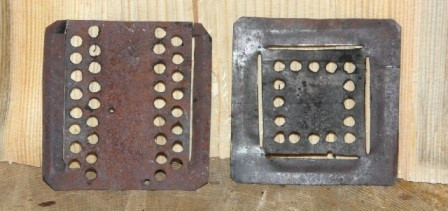
Eliminating the holes eased manufacturing time and maintained low boiling time. The testing of the diffusion plate was concluded since gains were becoming minimal.
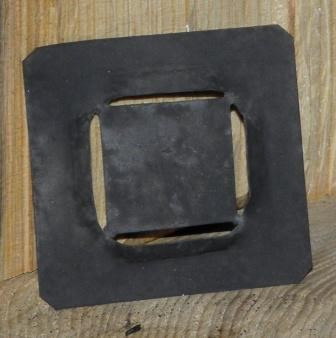
Draft tubes were the next to be tested. Little by little the legs of the draft tubes were cut down an eighth of an inch at a time. The legs were shortened from 5/8 to 1/4 inch with little difference to boil time. Then the idea to use an arc instead of rectangles was discussed. It sounded easier to manufacture, the 10% drop in boiling time was just icing on the cake.

Next the height of the stove was tested. Removing and adding 2 inches to the stove both had a negative effect on the time it took to boil water.
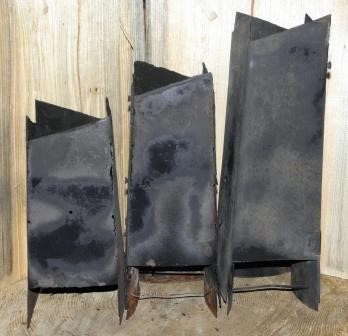
Lastly the distance between the diffusion plate and the draft tube was increased which resulted in the boiling of the water taking longer.
At last, ideas for change no longer yielded a benefit in boiling time. It was time to invest in redrawing the new parts.
Now what to do? As a business, clearly it was time to manufacture and sell the new stove, but what of our vision, “To explore and map innovative paths toward responsible independence”? It is just as important to draw the map of what we had discovered and to share the information with others, as to provide a readymade product. We invite you to join us on the beginning of this journey. Click here to download the drawings for the prototype stove or here to view the product.
